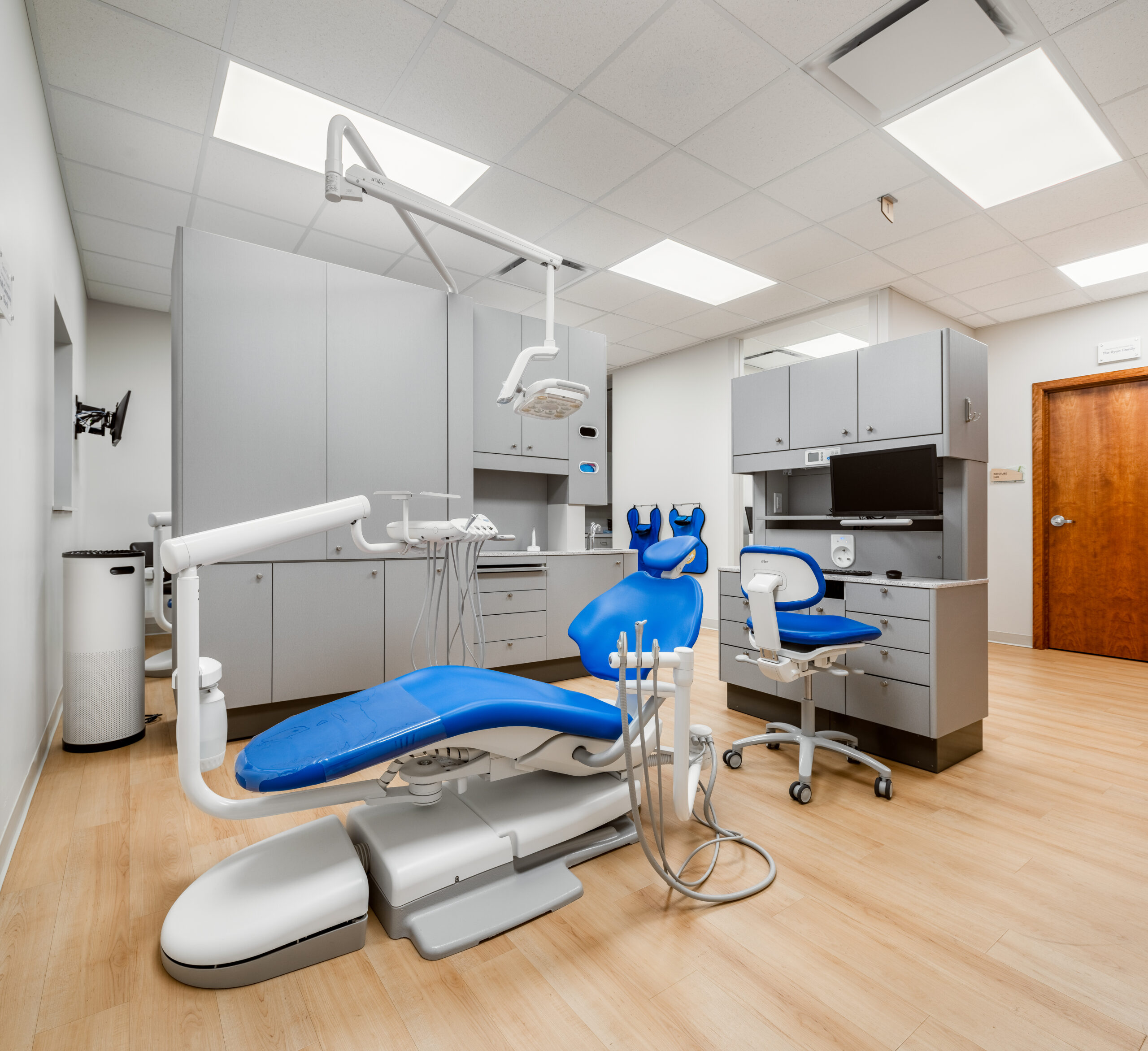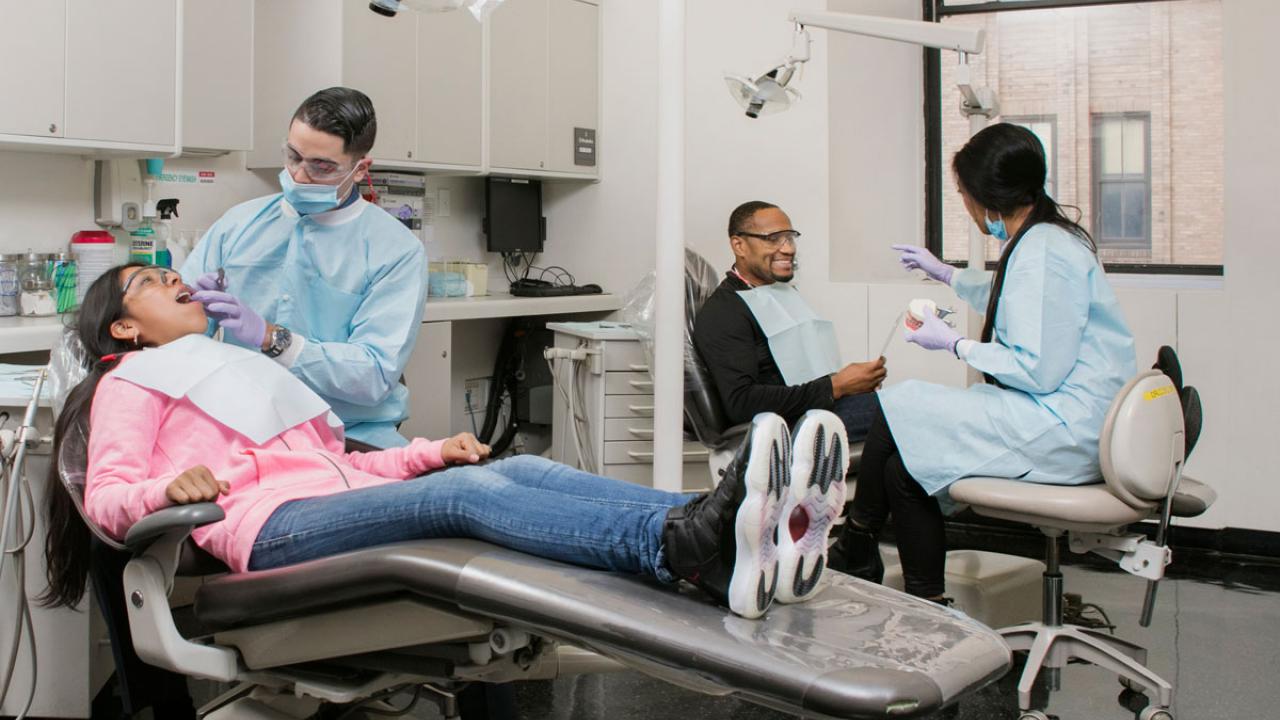Restorative Dentistry Belle River: Cutting-Edge Techniques for Improved Oral Wellness
Restorative Dentistry Belle River: Cutting-Edge Techniques for Improved Oral Wellness
Blog Article
Understanding the Latest Developments in Dentistry and Their Effect On Person Care
The landscape of dentistry is going through a transformative change, driven by innovations such as electronic imaging modern technologies, 3D printing, and minimally intrusive strategies. These technologies not just enhance analysis and treatment methods but likewise boost the general person experience by fostering more clear interaction and immediate results. The rise of tele-dentistry is connecting spaces in access to care, specifically for underserved areas. As these growths unravel, it ends up being necessary to consider how they reshape individual connections and influence decision-making in oral wellness monitoring. What effects might these changes hold for the future of dental care?
Digital Imaging Technologies
Recently, electronic imaging technologies have actually transformed the area of dentistry, improving analysis capacities and therapy preparation. These developments include techniques such as electronic radiography, intraoral electronic cameras, and cone-beam calculated tomography (CBCT), which use premium image high quality and reduced radiation exposure compared to traditional imaging strategies.
Digital radiography gives immediate imaging outcomes, allowing dentists to detect and resolve dental problems a lot more successfully - Cosmetic Dentistry Belle River. Intraoral cams enable extensive visualization of the mouth, helping with far better interaction with clients concerning their dental wellness. By providing high-resolution photos, oral experts can successfully discuss therapy alternatives and inspire people to seek needed treatment
Cone-beam calculated tomography (CBCT) has actually even more transformed the landscape by offering three-dimensional imaging, which is indispensable for complicated situations such as implant preparation and orthodontics. This modern technology enables specific anatomical assessments, substantially improving the accuracy of diagnostic and treatment procedures.
3D Printing Technologies

Moreover, 3D printing has assisted in the production of elaborate dental models that aid in therapy planning and client education and learning. These versions provide a concrete depiction of intricate oral concerns, fostering far better interaction between individuals and dentists - Family Dentist Lakeshore. Furthermore, developments in biocompatible materials have increased the prospective applications of 3D printing in dental implantology, enabling the manufacturing of tailored implants tailored to private physiological needs
In addition, academic institutions are progressively taking on 3D printing for training objectives, allowing pupils to practice on practical models that reproduce numerous scientific circumstances. In general, the assimilation of 3D printing advancements in dental care is not only streamlining procedures yet also improving the top quality of treatment given to clients, marking a substantial jump forward in the area.
Minimally Intrusive Techniques
The advancement of dental care is significantly characterized by a focus on minimally intrusive strategies, which prioritize client comfort and preservation of natural tooth structure. These techniques aim to decrease the need for substantial exploration and invasive treatments, therefore boosting the total patient experience and end results.
Minimally intrusive techniques incorporate different methodologies, consisting of air abrasion, laser dental care, and the usage of biocompatible products. Air abrasion permits the elimination of degeneration making use of a stream of fine fragments, decreasing damages to bordering healthy and balanced cells. Laser dentistry utilizes concentrated light energy to deal with tooth cavities and gum diseases with accuracy, frequently resulting in less discomfort and faster healing times.
Additionally, innovations in glue dentistry allow stronger bonds between oral materials and natural tooth structure, helping with effective remediations while maintaining even more of the initial tooth. This not just strengthens the durability of dental job however additionally sustains the visual stability of individuals' smiles.
As these methods continue to evolve, they hold the guarantee of improving person treatment by minimizing anxiousness, decreasing healing times, and promoting better long-term dental wellness. Inevitably, the change in the direction of minimally invasive dental care represents a considerable innovation in the field, aligning with contemporary health care worths.
Tele-Dentistry Development
Tele-dentistry has arised as a transformative pressure in the oral Find Out More industry, enhancing access to care and enhancing patient-provider communications. This cutting-edge approach uses data innovations to facilitate remote assessments, medical diagnosis, and therapy planning, efficiently connecting geographical barriers and reducing the need for in-person gos to.
The growth of tele-dentistry has been particularly valuable for underserved populations, where oral treatment gain access to is commonly minimal. Through online visits, patients can receive prompt assessments and assistance without the logistical obstacles of taking a trip to an oral office. Furthermore, tele-dentistry makes it possible for dental experts to manage follow-up care a lot more efficiently, allowing for constant tracking of treatment development.
As modern technology continues to advance, the possibility for tele-dentistry to enhance individual education and preventive care steps will only expand, promoting a proactive approach to dental health management. Inevitably, tele-dentistry stands for a considerable development in the dental field, straightening with contemporary health care needs and person expectations.
Enhancing Client Relationships
Building solid person relationships is vital in modern dental care, as it fosters trust and urges open communication in between oral specialists and their customers. This rapport is fundamental for delivering personalized treatment and boosting therapy outcomes. As advancements in modern technology, such as tele-dentistry, remain to reshape the dental landscape, the emphasis on individual relationships is much more critical than ever.

Moreover, the combination of patient education right into appointments can debunk dental treatments, encouraging people to make informed decisions about their dental wellness. This technique not just cultivates trust fund however also motivates adherence to therapy strategies, eventually resulting in better health and wellness end results.
Final Thought
The most recent advancements in dentistry, consisting of electronic imaging modern technologies, 3D printing, minimally invasive techniques, and the growth of tele-dentistry, dramatically enhance individual treatment. These advancements streamline diagnostic and therapy processes, facilitate immediate outcomes, and improve interaction in between specialists and patients. They promote more powerful patient relationships and advertise positive dental wellness monitoring. Inevitably, these developments empower people, furnishing them with the essential expertise to view make educated decisions concerning their therapies and general oral health.
By providing high-resolution photos, oral professionals can efficiently clarify treatment alternatives and inspire clients to go after required treatment.
By using digital perceptions in combination with 3D printing, dental experts can substantially minimize turn-around times, allowing for same-day therapies that boost patient complete satisfaction.
Furthermore, 3D printing has promoted the creation of detailed dental models that aid in therapy preparation and patient education.Building solid client partnerships is necessary in modern-day dental care, as it fosters count on and urges open communication between dental specialists and their customers. Furthermore, employing person responses systems can improve solution delivery and patient complete satisfaction, ensuring that their voices are listened to.
Report this page